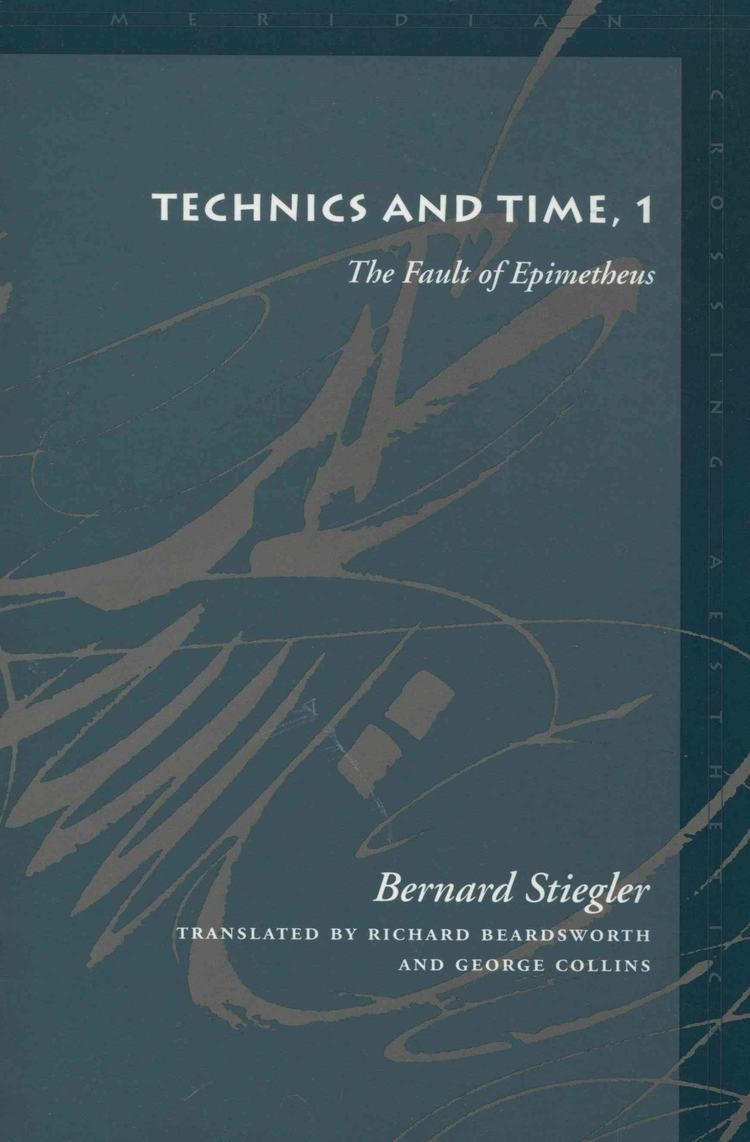8.2 /10 1 Votes8.2
Country France Media type Print Originally published 1994 | 4.1/5 Goodreads ISBN 978-0804730419 | |||||||||||||||||||||||||||||||||
 | ||||||||||||||||||||||||||||||||||
Similar Works by Bernard Stiegler, Technology books | ||||||||||||||||||||||||||||||||||
Technics and Time, 1: The Fault of Epimetheus (French: La technique et le temps, 1: La faute d'Épiméthée) is a book by the French philosopher Bernard Stiegler, first published by Galilée in 1994.
Contents
The English translation, by George Collins and Richard Beardsworth, was published by Stanford University Press in 1998. The Technics and Time series is the fullest systematic statement by Stiegler of his philosophy, and the first volume draws on the work of Martin Heidegger, André Leroi-Gourhan, Gilbert Simondon, Bertrand Gille, Jean-Jacques Rousseau, and Jean-Pierre Vernant in order to outline and develop Stiegler's major philosophical theses. The series currently consists of three books.
Overview
Stiegler argues that "technics" forms the horizon of human existence. This fact has been suppressed throughout the history of philosophy, which has never ceased to operate on the basis of a distinction between episteme and tekhne. The thesis of the book is that the genesis of technics corresponds not only to the genesis of what is called "human" but of temporality as such, and that this is the clue toward understanding the future of the dynamic process in which the human and the technical consists.
Succeeding volumes
Stiegler has thus far published three volumes in the Technics and Time series. The Fault of Epimetheus was followed by Tome 2: La désorientation (1996) and Tome 3: Le temps du cinéma et la question du mal-être (2001). Volume Two was published in translation by Stanford University Press in 2008 with the subtitle, Disorientation, with Volume Three appearing in 2010 with the subtitle, Cinematic Time and the Question of Malaise (both volumes translated by Stephen Barker). Stiegler has at times mentioned his intention to publish further volumes in this series, but these are yet to appear.
